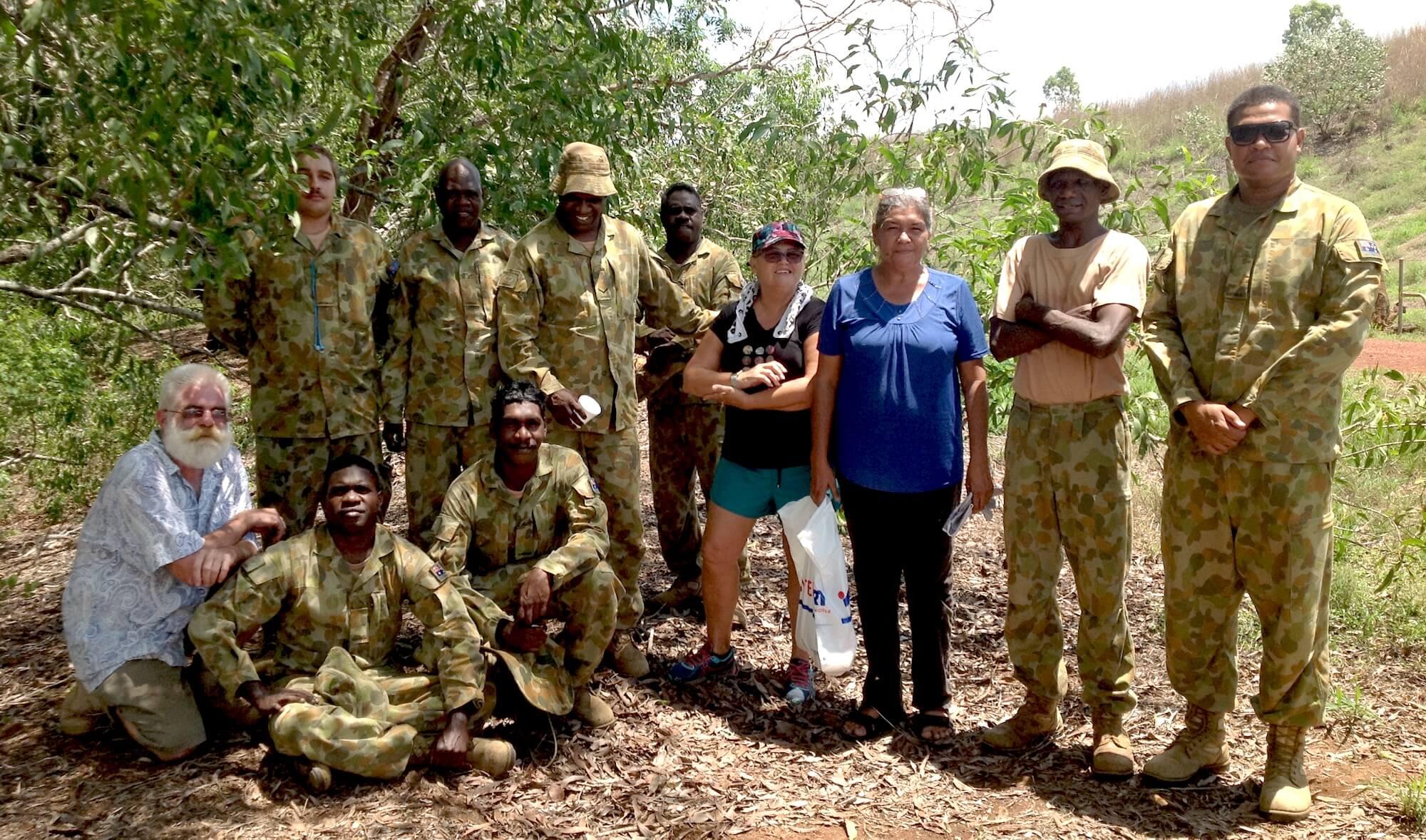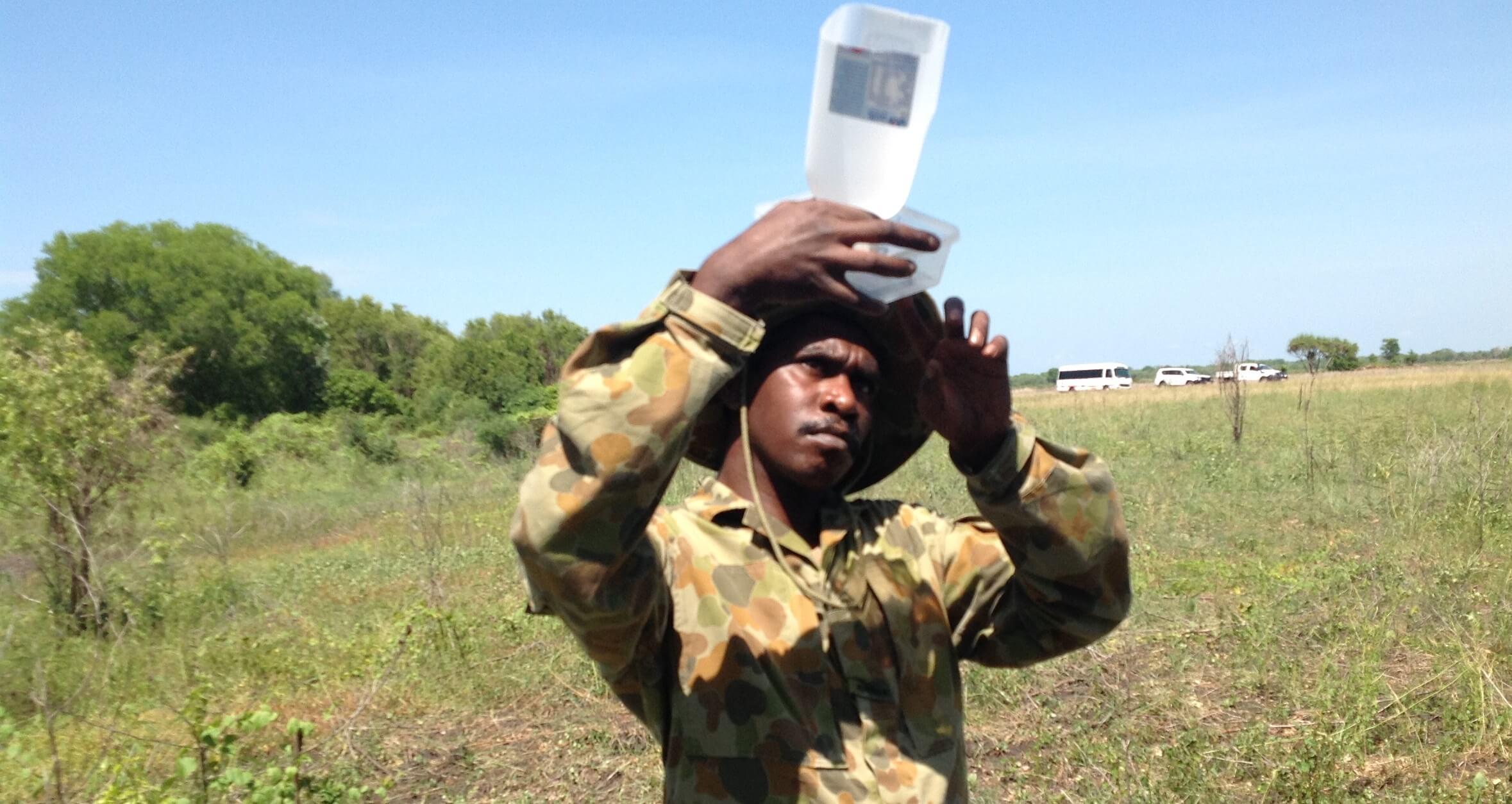

Trainees from the Army Indigenous Development Program (AIDP) have been lending a hand to the Territory Natural Resource Management (TNRM) bio control project to reduce the damaging effects of the Mimosa weed.
The Mimosa pigra (Mimosa) is a declared Class A and Class C weed and now occupies approximately 140,000 hectares of floodplains across 15 catchments in the NT. About 10% of the Territory’s wetlands have already been impacted by Mimosa and it has the potential to spread right across northern Australia, with the total area at risk estimated to be up to 4,600,000 hectares.
This bio control project has been running since 1989 as a part of a long term plan to manage and reduce the damaging effects of this species.
The latest agent to join the fight against this weed is the Mimosa Flea Beetle (Nesaecrepida infuscate). Although army trainees may learn to operate all different kinds of firearms, this little beetle is probably the tiniest weapon they will have to handle.
The project offered an opportunity for the AIDP trainees to improve their maths, navigation skills and to learn more about environmental management. After participating in a number of field trips, trainees were able to release insects and monitor the areas to determine the progress from previous visits. The AIDP is run in partnership between Batchelor Institute of Indigenous Tertiary Education and the Australian Army.
It offers safe middle-ground training for Aboriginal and Torres Strait Islander peoples to learn and adjust to the demands of fill time employment in the army. It is credited with significantly increasing the number of Aboriginal and Torres Strait Islanders entering the army and frequently involved trainees working within the community.
Working together with Territory Natural Resource Management (TNRM) to control the Mimosa plant and protect the Territory’s unique ecosystems is an important project and also helps the trainees develop new skills.

